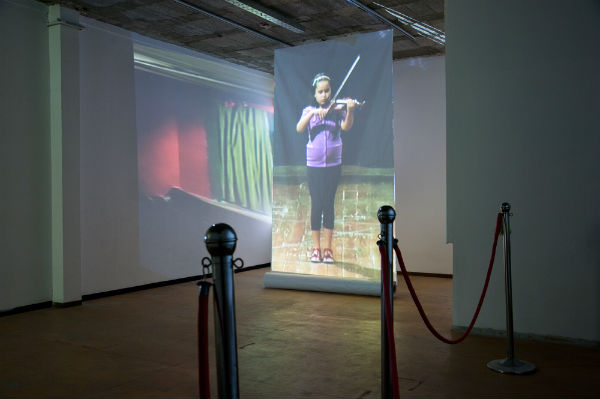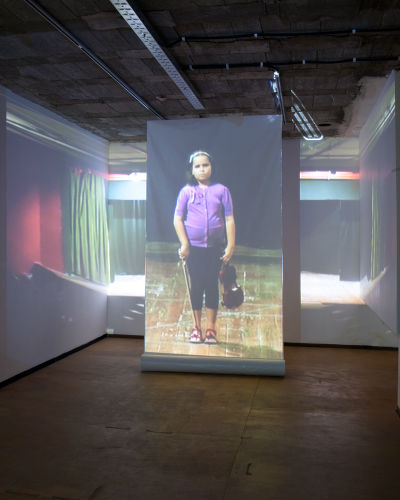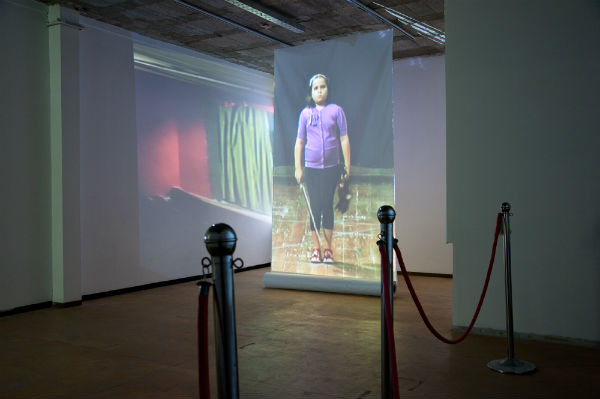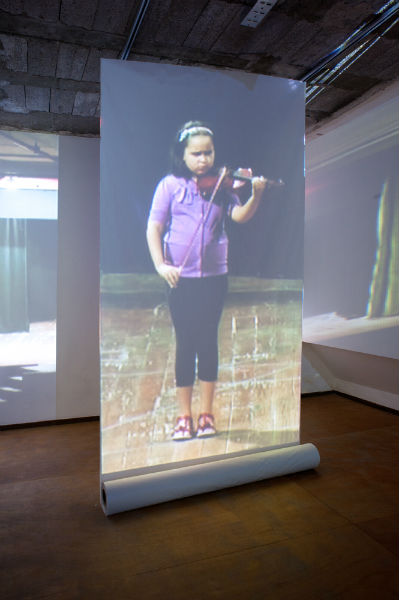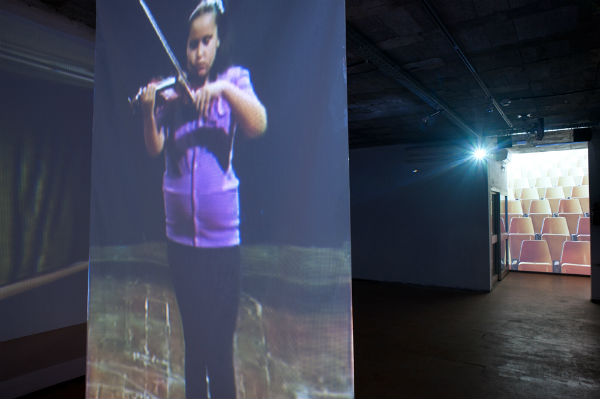Keren Gueller
Opus 24
Kav 16 -Community Gallery for Contemporary Art, Tel Aviv
Nov - Dec 2011
In the center of Keren Gueller's solo show stands a new installation Opus 24, done in collaboration with Neve Eliezer Community Center Conservatorium.
Using a minimalist low tech visual language Gueller examines the relationship between the different artistic mediums presented at the installation: video screenings, ready made and light sculpturing.
Opus 24 deals with the delicate range between childish innocence, talent, ambition and success, through Diana's image, an eight year old conservatory violinist student. The installation focuses on the hart - touching difficulties, the endless sisyphean training, constant practicing demand and height concentration level required in the learning process of a musical instrument. On the other hand, it raises many questions regarding competitiveness, ambitiousness and success measurement in a time that children and teenagers dream to become famous, dream to become the next show biz discovery. These are a few of many symptoms to by found in our contemporary ostentatious society which cherishes success stories, praises the "star industry" and believes in an "instant" culture.
Two video screenings stand at booth sides of the gallery facing each other. At the entrance a static image of a group of auditorium chairs is projected facing a double video screening presenting Neve Eliezer's auditorium stage on the wall and before it, separated from it, Diana's image playing Oskar Rieding (1840-1918) Concertino in G for Violin and Piano screened upon a sheet of paper sloping down the gallery ceiling.
A kind of "backstage" is created between the two screenings, enabling the visitor to wonder around in a usually non existing space – the "backstage" of a theatre stage, of a piece work and of the video art medium. The opened wide space of the gallery, vertical to the two screenings, present a ready made object – a treated column routing row, on top of which a stage round light spot is presented.
In Opus 24 Gueller aims to disassemble and to reassemble the theatrical aspect of the work – from a conceptual, aesthetic and physic point of view. Diana's authentic and sincere presence standing on a stage in an empty theater may arouse a direct, simple and effective emotional experience. Diana's violin playing stays monotonic through the whole length of the work; however, because the absence of pathos or drama Gueller succeeds to emphasize feelings of alienation and remoteness.
The work is closed within itself and presents a detached moment, lacking identity – is this "the moment before" or a remnant action of "the after moment". One way or another, the work leaves the viewer in expectation for a decisive moment that doesn't occur.
Gueller's election to present an installation compose of three works, unified in to one "narrative", dictate a different number of non - hierarchy points of views, depriving the visitors possibility to contain all at once. The action of disassemble and reassemble presented at the work becomes not only a physical but a symbolic one and raises questions regarding the visitor's view and the degree of involvement required from him to achieve an effective art piece reading.
In this installation Gueller raises formalistic questions concerning the limits of video art medium in which she operates, and examines through the use of characteristic elements component of a work of art such as light and shadow, proportion games and scale disruptions, the flexibility extent of the medium and its relation towards traditional mediums like painting and sculpture. Gueller succeeds to create a real and concrete theatrical surrounding, replete of a fantastic existence and psychological depth.
The installation Opus 24 exposes on one hand a "representative" moment and an intimate, delicate, fragile human moment on the other one. The work's starting point is related to one of the artist's childhood memories; however she manages to break out its autobiographical boundaries by using personal-privet aspects as a universal utensil.
Curator: Sally Haftel Naveh

